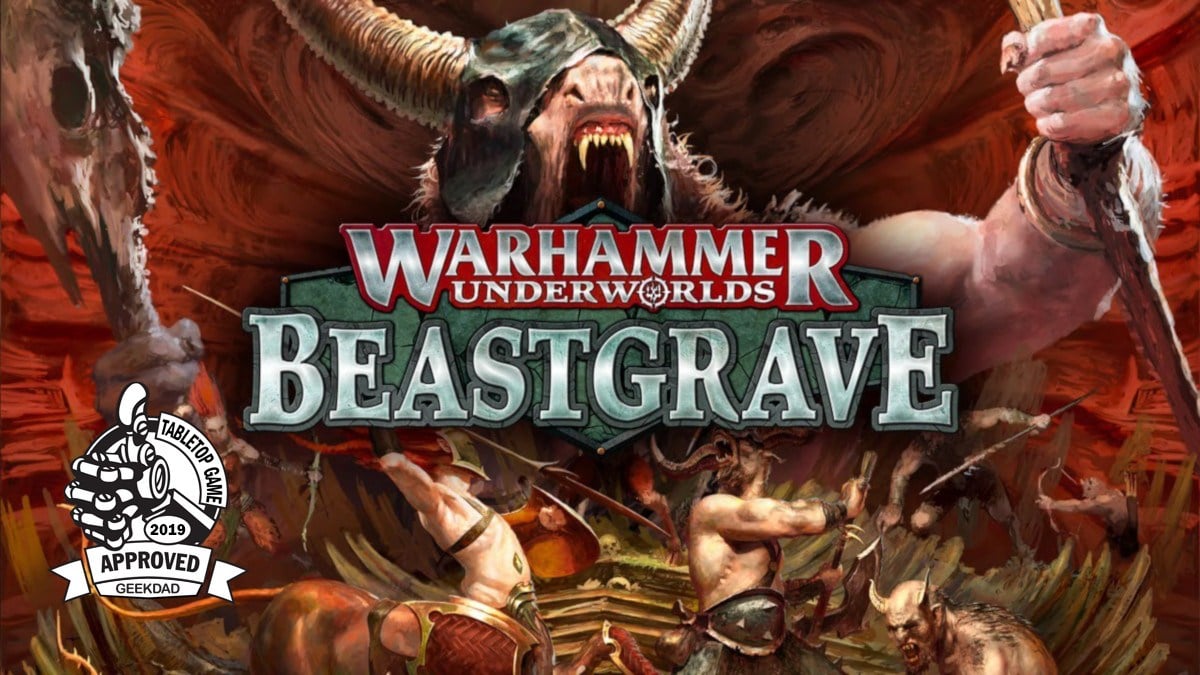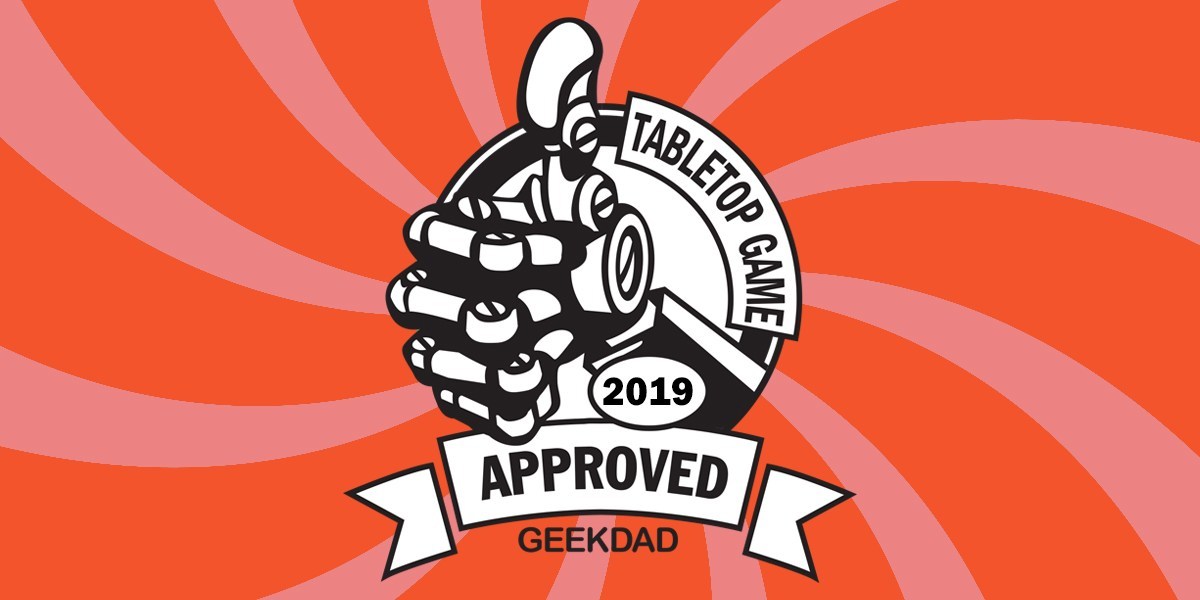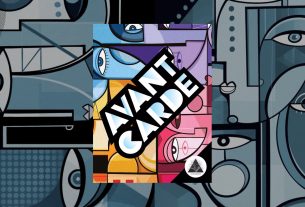Earlier this year, I covered the release of the third season of Warhammer Underworlds: Beastgrave. I’ve been an avid player of the Warhammer Underworlds since its inception back in 2017. Indeed, in that year, I awarded it the coveted “GeekDad Approved” status. Second season, Nightvault, continued the good work, but I didn’t feel improved enough on the original game to make it worthy of further approved status. Now, with season 3, the Underworlds design team has made enough positive changes to the game to allow me to consider Beastgrave and Warhammer Underworlds fully GeekDad Approved for 2019.
Here are 6 reasons why you should be playing Warhammer Underworlds: Beastgrave.
1. Streamlined Rules.
Shadespire was a great game, but it was a departure for GW into the realm of card games. It’s a little bit Magic: the Gathering and a little bit X-Wing. GW clearly knew which chunk of the market share it was after. Shadespire did what it did very well, offering a tactical battle that could be played in under 45 minutes. It hit the sweet spot for busy players for whom most of the GW game catalog takes far too long to play.
But…
GW had little experience of writing card text for competitive gaming. Their rules terminology was woolly, for want of a better term. As the card list grew (each new expansion release added new cards to the game), some difficult interactions started to crop up, made by worse by the fact that cards with apparently the same effects had slightly different wording.

If there’s one thing I’ve learned from playing Underworlds it’s that if there’s the tiniest crack of ambiguity in the rules, competitive players will find a way of turning it into a yawning chasm. There were lots of discussions of “Rules as Intended,” vs. “Rules as Written,” where, if you could convince enough people that the rules was written to mean something it clearly didn’t intend, you officially weren’t cheating. We all knew you were cheating, but officially you weren’t and that’s the main thing in a competitive game; winning by pedantry is all. (I’m largely jesting here. The game has some great and skillful players, and they could beat me hands-down without resorting to rule interpretation trickery.)
In response, GW kept producing clarifications through FAQs and Errata but these were irregular and few and far between, so arguments could run on and on. And, as the card base got bigger, the problem got worse.
That has now (mostly) gone. Beastgrave has seen the introductions of keywords and a much stricter sequencing of events. This means that everybody knows where they stand with terms used on the card. They are defined in the rulebook and much less open to interpretation. The tighter sequencing also means there is less discussion of when a card can be played. By and large, everybody now agrees on the timings because they’ve been spelled out in black and white.
I’d be lying if I said it was perfect, but the new rules, whilst they might take a little more reading, are far more straightforward and defined.
2. Revolution, Baby!
At the end of Season 2, the game was becoming bloated. There were over 1,000 cards and if you were new to the game, there was a lot of catching up to do, if you wanted to compete on a level playing field. It’s a fact that the more cards you have, the better decks you can put together. (Though remember in Underworlds you can only have 1 of each card in your deck, and there are no blind boosters. When you buy an expansion in Underworlds you know exactly which card you are going to get. A definite extra point in the game’s favor.)
Before Beastgrave arrived, GW announced that the old Season 1 cards were going to be rotated out, at least for competitive play. There was some crying that the sky had fallen in, but this change has opened up the game and made it so much better. There are a number of reasons for this.
- Some of the first season cards were overpowered. They appeared in every deck and the game could feel quite samey, no matter who you were playing.
- As stated in reason 1, above, the wording on Season 1 cards was often ambiguous. No need to worry about that anymore.
- If you start to play, you have 450+ fewer cards to worry about getting. If you want to play catch up, you can. The Nightvault cards are still available and, whilst that’s no small outlay, at least you’re not looking at having to get all the Shadespire cards as well.
- GW has said that each season will be rotated out after two seasons. If you are only just discovering Underworlds and start by picking up this season’s releases, this time next year, the Nightvault cards will rotate out, and you’ll have all the cards you need for championship play.

3. The Meta is Better.
Meta—a word I’d not heard of in this context before playing Underworlds (when I were a lad, meta was a position on a benzene ring), but it essentially means the state of the game. Card games ebb and flow as new cards come in. The top players find interesting ways to combine them, and everybody copies their idea. Thus the “meta” is born. The top players then find ways to counter their own plays, and everybody copies that, or new cards come in, and so the meta shifts.
Play under Nightvault was very one-dimensional. There was a huge payoff for being as aggressive as possible. There were a couple of notable exceptions, but it felt like there was only one way to play. The game lacked finesse and relied on who could stack their deck in the most efficient way to mitigate the vagaries of dice rolls.
The rotating out of some overpowered cards and a recalibration of the game with more “control” cards has hugely improved things. It very much feels like there are multiple ways to play the game, and controlling board territory is a legitimate way to play again. Under Nightvault it was very hard to control territory if somebody had killed all your models.
4. Warbands Can Stand on Their Own.
One huge departure for Beastgrave is that individual warbands releases now carry enough cards (32) to play an entirely faction specific deck. (Cards in Underworlds are either universal—playable by all warbands—or faction-specific—can only be played using a particular faction.) This means all Beastgrave warbands can be played straight out of the box, with no deckbuilding. In theory, you could buy just one warband, rock up to your gaming club and get a game. Previously, warbands HAD to have some universal cards to play them, which meant not only meant some additional buy-in, but it also meant you had to do some element of deckbuilding, whether you wanted to or not.

Now, if you just want to pick up and play, you can.
There are some caveats to this.
- You’ll never beat anybody who has created their own deck with a faction-only deck. (Well, not unless you’re really good.)
- It’s not clear yet how balanced they all are. Indeed, the Grymwatch seems to be stronger than the other Beastgrave warbands straight out of the box. We may not be playing on a level playing field.
- Most player-created decks have a plan, with some synergies that aren’t overly reliant on one or two cards coming out in a specific order. The pre-made decks don’t have this, and if luck goes against you and your cards don’t come out right, it can be very hard to play effectively.
5. The Release Schedule Is Slower.
Mostly. There has just been a bonanza pre-Christmas release, with a brand new warband and the bands and cards from the Barnes and Nobel exclusive, Dreadfane, being released, as well as a Beastgrave Gift Pack. The general trend in Beastgrave however, is for a single warband to be released at a time. In previous seasons, GW released two warbands at once and with them a slew of new universal cards. This immediately threw the meta up in the air.
This brought about massive changes to the game all at once, which almost replaced everything to had gone before. It also meant you had to make both purchases if you wanted to remain competitive.
By releasing one warband at a time, the impact of the release on the game as a whole is markedly smaller, especially as the move to full faction-specific decks has reduced the number of universal cards overall. The meta shifts less dramatically, and, for those on a budget, it’s easier to find the money for one warband, and save for the next one. It’s also great for those who like to paint, as we’re not inundated by fresh plastic.

6. The Community is Awesome.
This one can’t really be underestimated. The Warhammer Underworlds community is one of the most positive and helpful gaming communities I’ve encountered. It has several excellent and very active blogs and podcasts, some great YouTube channels, an active Discord, and two supportive Facebook groups. Check out all the community resources at the excellent “Well of Power” website. If you’re looking for some video inspiration, do check out “Agents of Sigmar,” absolutely the best Underworlds videos in the world. (As I’m one half of the Agents team, my judgment may be a little clouded on this.)
The TL;DR:
Warhammer Underworlds is absolutely the best game that Games Workshop makes. Especially, if you want to play 2 or 3 games in an evening. With the Beastgrave release, the game has opened up into new areas that foster more interesting tactics and deckbuilds. It’s a huge amount of fun, whilst remaining tactically interesting. GW has shown a commitment to making the game as strong as it can be, taking onboard community wishes and responding reasonably quickly if any weaknesses in gameplay appear. The game is very accessible and can be enjoyed casually or competitively. The release of Beastgrave has made this the perfect time to take up Warhammer Underworlds.
If this review has piqued your interest, check out the full range of Beastgrave stuff, here and more information about the game on the official website.
![]() To subscribe to GeekDad’s tabletop gaming coverage, please copy this link and add it to your RSS reader.
To subscribe to GeekDad’s tabletop gaming coverage, please copy this link and add it to your RSS reader.
Click here to see all our tabletop game reviews.
Disclosure: GeekDad received a copy of this game for review purposes.







